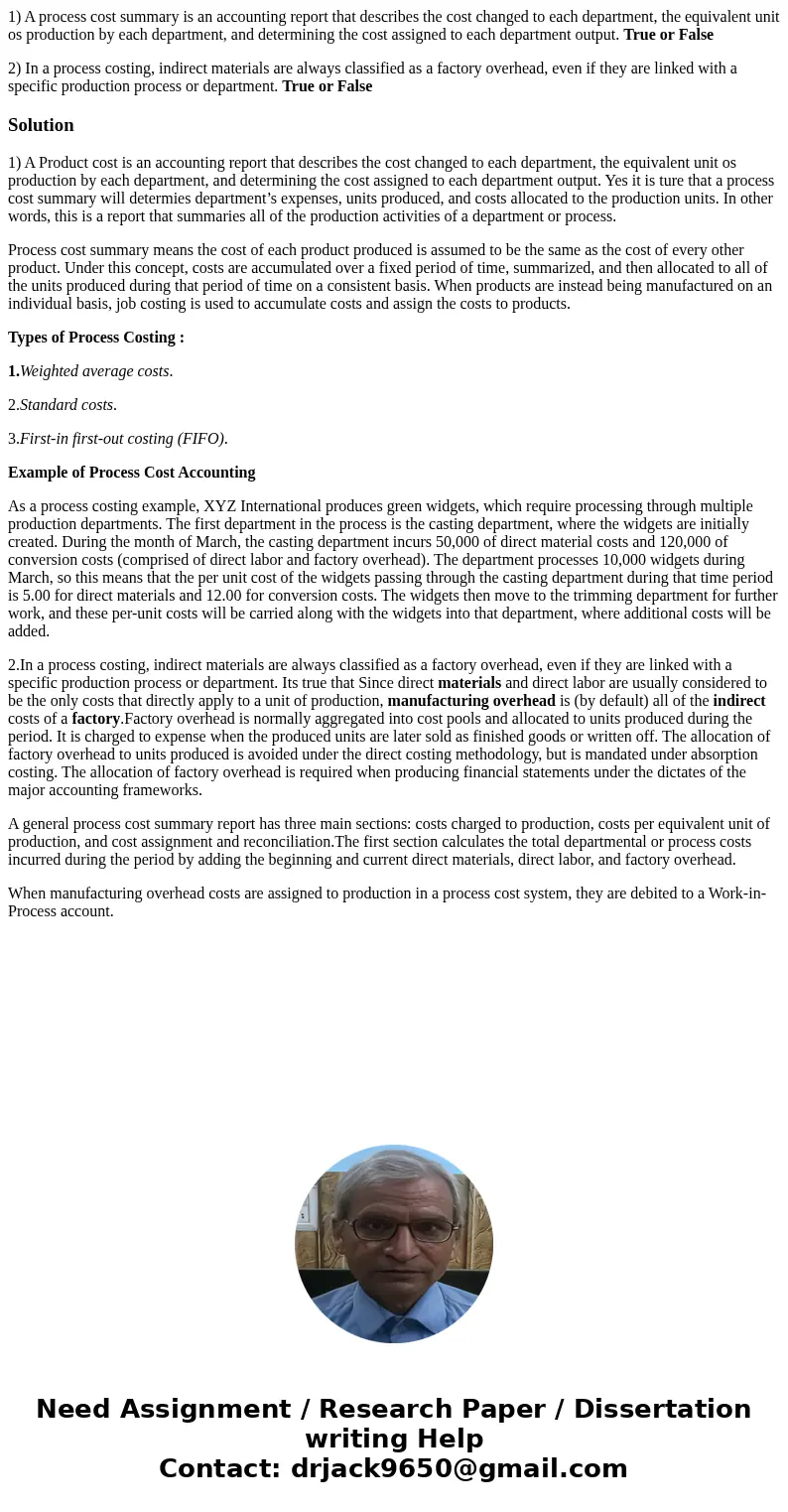1 A process cost summary is an accounting report that descri
1) A process cost summary is an accounting report that describes the cost changed to each department, the equivalent unit os production by each department, and determining the cost assigned to each department output. True or False
2) In a process costing, indirect materials are always classified as a factory overhead, even if they are linked with a specific production process or department. True or False
Solution
1) A Product cost is an accounting report that describes the cost changed to each department, the equivalent unit os production by each department, and determining the cost assigned to each department output. Yes it is ture that a process cost summary will determies department’s expenses, units produced, and costs allocated to the production units. In other words, this is a report that summaries all of the production activities of a department or process.
Process cost summary means the cost of each product produced is assumed to be the same as the cost of every other product. Under this concept, costs are accumulated over a fixed period of time, summarized, and then allocated to all of the units produced during that period of time on a consistent basis. When products are instead being manufactured on an individual basis, job costing is used to accumulate costs and assign the costs to products.
Types of Process Costing :
1.Weighted average costs.
2.Standard costs.
3.First-in first-out costing (FIFO).
Example of Process Cost Accounting
As a process costing example, XYZ International produces green widgets, which require processing through multiple production departments. The first department in the process is the casting department, where the widgets are initially created. During the month of March, the casting department incurs 50,000 of direct material costs and 120,000 of conversion costs (comprised of direct labor and factory overhead). The department processes 10,000 widgets during March, so this means that the per unit cost of the widgets passing through the casting department during that time period is 5.00 for direct materials and 12.00 for conversion costs. The widgets then move to the trimming department for further work, and these per-unit costs will be carried along with the widgets into that department, where additional costs will be added.
2.In a process costing, indirect materials are always classified as a factory overhead, even if they are linked with a specific production process or department. Its true that Since direct materials and direct labor are usually considered to be the only costs that directly apply to a unit of production, manufacturing overhead is (by default) all of the indirect costs of a factory.Factory overhead is normally aggregated into cost pools and allocated to units produced during the period. It is charged to expense when the produced units are later sold as finished goods or written off. The allocation of factory overhead to units produced is avoided under the direct costing methodology, but is mandated under absorption costing. The allocation of factory overhead is required when producing financial statements under the dictates of the major accounting frameworks.
A general process cost summary report has three main sections: costs charged to production, costs per equivalent unit of production, and cost assignment and reconciliation.The first section calculates the total departmental or process costs incurred during the period by adding the beginning and current direct materials, direct labor, and factory overhead.
When manufacturing overhead costs are assigned to production in a process cost system, they are debited to a Work-in-Process account.

 Homework Sourse
Homework Sourse